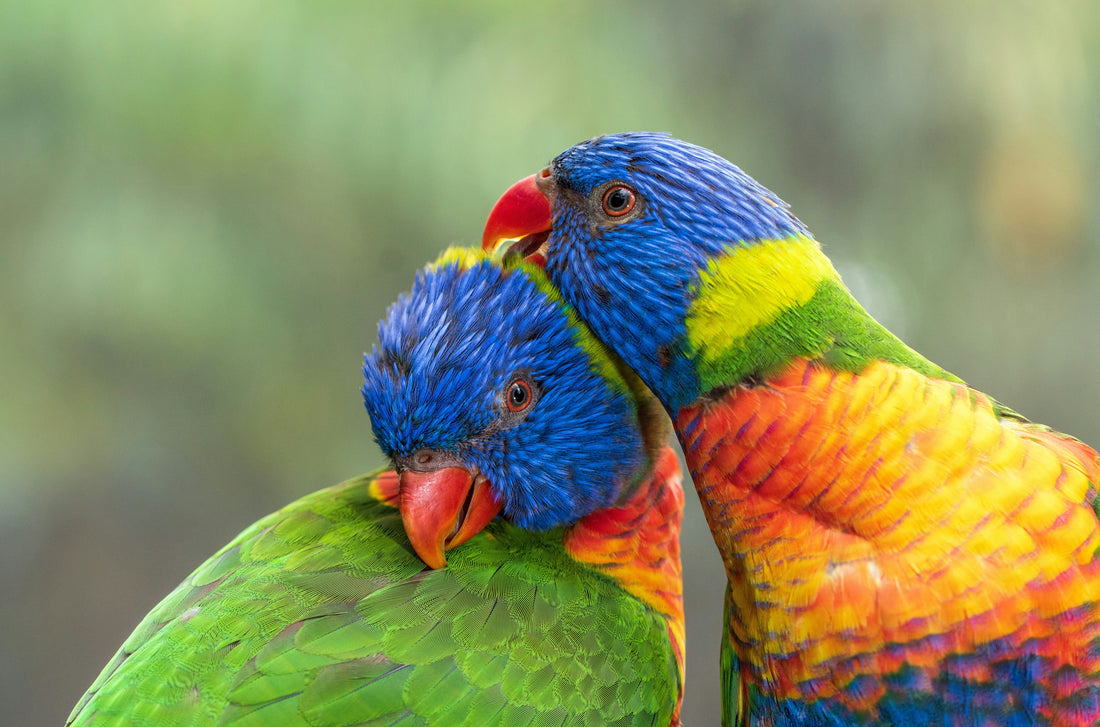
The Fascinating World of Birds: Fun Facts You Didn’t Know
Share
Birds are among the most diverse and intriguing creatures on the planet. With their incredible abilities, unique adaptations, and surprising behaviors, they continue to amaze scientists and bird enthusiasts alike. Whether you’re an avid birdwatcher or just someone who enjoys nature, here are some fascinating facts about birds that you may not have known.
1. Birds Are the Closest Living Relatives to Dinosaurs
Did you know that modern birds evolved from theropod dinosaurs? In fact, birds share many characteristics with their prehistoric ancestors, including hollow bones, feathers, and similar skeletal structures. The Archaeopteryx, a famous fossil discovered in Germany, is often cited as the missing link between dinosaurs and birds. So, when you see a bird soaring in the sky, you’re essentially looking at a modern-day dinosaur!
2. The Fastest Bird in the World Is Not What You Think
Many people assume that the fastest bird is an eagle or a hawk, but the title actually goes to the Peregrine Falcon. This incredible raptor can reach speeds of over 240 mph (386 km/h) when diving to catch its prey. That makes it the fastest animal on the planet!
3. Some Birds Can Sleep While Flying
Imagine being able to take a nap while on the move! Certain birds, like the Alpine Swift and the Frigatebird, can sleep in mid-air. They do this by shutting down one half of their brain at a time, allowing them to rest while still staying airborne. This adaptation is particularly useful for birds that spend long periods migrating over the ocean.
4. Hummingbirds Are the Only Birds That Can Hover and Fly Backward
Hummingbirds are truly unique in the avian world. Unlike other birds, they can hover in place, fly sideways, and even move backward with incredible precision. This is thanks to their rapid wing movement, which can beat up to 80 times per second in some species. Their ability to extract nectar from flowers while hovering makes them essential pollinators in many ecosystems.
5. Owls Can Rotate Their Heads Almost 360 Degrees
Have you ever wondered how owls can spot prey from all angles? Unlike humans, whose eyes can move within their sockets, an owl’s eyes are fixed in place. To compensate, owls can rotate their heads up to 270 degrees in either direction, allowing them to have an almost complete view of their surroundings without moving their body.
6. The Smallest Bird in the World Weighs Less Than a Penny
The Bee Hummingbird, native to Cuba, holds the title of the world’s smallest bird. Weighing only about 1.6 grams (0.056 ounces) and measuring around 2.2 inches (5.5 cm) in length, this tiny bird is smaller than many insects! Despite its size, it has a fast metabolism and needs to feed almost constantly to survive.
7. Birds Have Built-In GPS for Migration
Many birds embark on long migrations each year, traveling thousands of miles without getting lost. How do they do it? Birds use a combination of Earth’s magnetic field, the position of the sun and stars, and even scent cues to navigate. Some species, like the Arctic Tern, migrate from the Arctic to Antarctica and back each year, covering over 44,000 miles (71,000 km)—the longest migration of any bird.
8. Pigeons Can Recognize Themselves in a Mirror
Pigeons may not seem like the smartest birds, but studies have shown that they are capable of self-recognition, a trait shared by only a few animals, including primates, dolphins, and elephants. Pigeons have also been trained to recognize words, solve problems, and even distinguish between different artistic styles!
9. Crows and Ravens Are Among the Smartest Birds
Crows and ravens are often associated with mystery, but they are also some of the most intelligent birds on Earth. These members of the corvid family can use tools, solve complex puzzles, recognize human faces, and even hold grudges. Some studies suggest that crows have cognitive abilities similar to those of a seven-year-old child.
10. Some Birds Can Imitate Human Speech
Parrots are well-known for their ability to mimic human speech, but they’re not the only birds with this talent. Lyrebirds, found in Australia, are master imitators and can mimic not just human speech but also chainsaws, camera shutters, and car alarms with stunning accuracy. Mynah birds and some crows are also known for their vocal mimicry.
11. Birds Have Different Ways of Staying Warm in Winter
While some birds migrate to escape the cold, others have unique ways of staying warm. Chickadees, for example, go into torpor, a state where their body temperature drops significantly to conserve energy. Other birds, like penguins, huddle together in large groups to share body warmth.
12. The Shoebill Stork Looks Like a Dinosaur
One of the most prehistoric-looking birds alive today is the Shoebill Stork, native to Africa. With its massive beak, piercing stare, and slow movements, it resembles something out of the Jurassic period. It even makes a sound similar to a machine gun by clapping its bill together when communicating.
Final Thoughts
Birds are extraordinary creatures with incredible adaptations, intelligence, and beauty. Whether it’s the mind-blowing speed of a peregrine falcon, the brainpower of a crow, or the colorful plumage of a peacock, there is always something new to learn about these feathered wonders. Next time you see a bird, take a moment to appreciate just how fascinating they really are!
